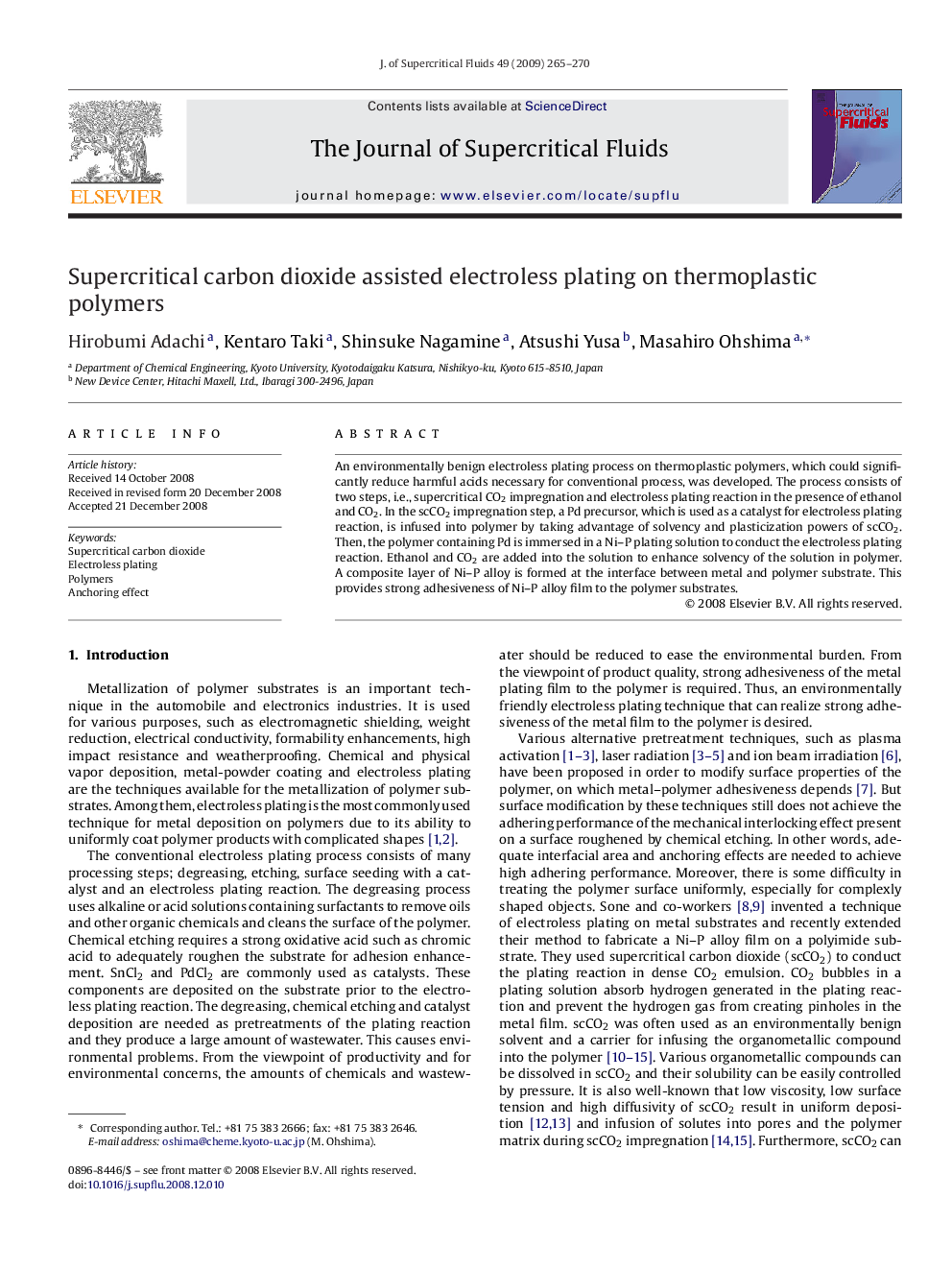| Article ID | Journal | Published Year | Pages | File Type |
|---|---|---|---|---|
| 231670 | The Journal of Supercritical Fluids | 2009 | 6 Pages |
An environmentally benign electroless plating process on thermoplastic polymers, which could significantly reduce harmful acids necessary for conventional process, was developed. The process consists of two steps, i.e., supercritical CO2 impregnation and electroless plating reaction in the presence of ethanol and CO2. In the scCO2 impregnation step, a Pd precursor, which is used as a catalyst for electroless plating reaction, is infused into polymer by taking advantage of solvency and plasticization powers of scCO2. Then, the polymer containing Pd is immersed in a Ni–P plating solution to conduct the electroless plating reaction. Ethanol and CO2 are added into the solution to enhance solvency of the solution in polymer. A composite layer of Ni–P alloy is formed at the interface between metal and polymer substrate. This provides strong adhesiveness of Ni–P alloy film to the polymer substrates.
Graphical abstractSTEM-EDS map of the Ni concentration profile at a cross-section of the interface between the PA6 substrate and Ni–P film (black region on the left is PA6, white and red region is Ni–P film). Composite layer of PA6 and Ni–P (green and blue) is formed by a hybrid process of supercritical impregnation of Pd catalyst and CO2 and EtOH assisted electroless plating.Figure optionsDownload full-size imageDownload as PowerPoint slide
